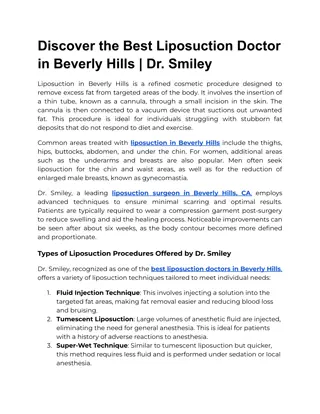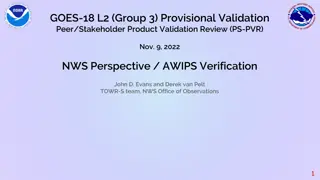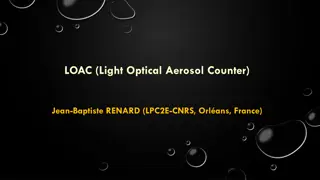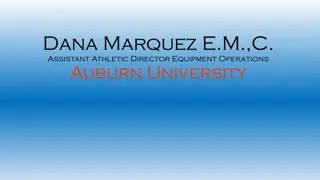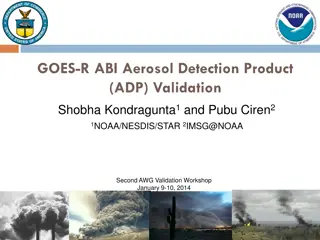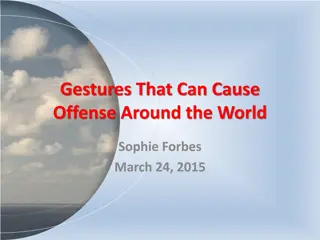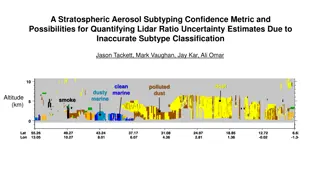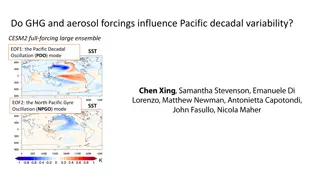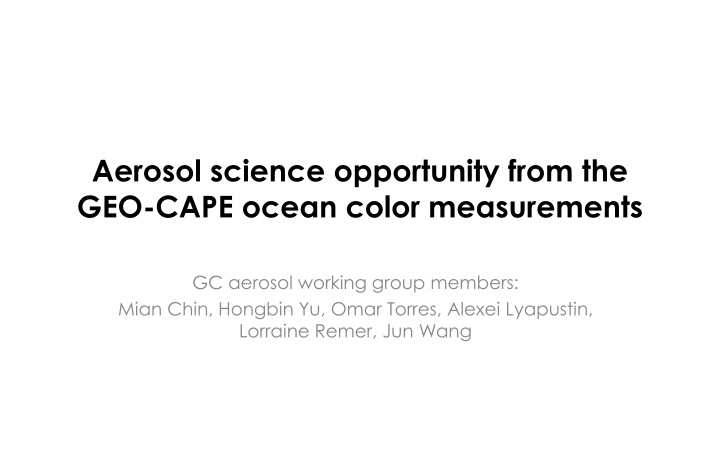
Coastal Aerosol Science Opportunities for Understanding Atmospheric Processes
Explore the significance of coastal aerosol measurements in studying atmospheric processes, including impacts on air quality, intercontinental transport fluxes, and interactions with coastal meso-scale circulations. Discover how accurate aerosol measurements near the coast can help quantify transport fluxes and emissions for a better understanding of environmental dynamics.
Download Presentation

Please find below an Image/Link to download the presentation.
The content on the website is provided AS IS for your information and personal use only. It may not be sold, licensed, or shared on other websites without obtaining consent from the author. If you encounter any issues during the download, it is possible that the publisher has removed the file from their server.
You are allowed to download the files provided on this website for personal or commercial use, subject to the condition that they are used lawfully. All files are the property of their respective owners.
The content on the website is provided AS IS for your information and personal use only. It may not be sold, licensed, or shared on other websites without obtaining consent from the author.
E N D
Presentation Transcript
Aerosol science opportunity from the GEO-CAPE ocean color measurements GC aerosol working group members: Mian Chin, Hongbin Yu, Omar Torres, Alexei Lyapustin, Lorraine Remer, Jun Wang
Aerosol science from OC measurements The OC measurement and instrument requirements can provide an excellent opportunity for aerosol science focusing on the coastal area The most fundamental requirement is quality retrieval of AOD and sufficient spatial (coastal water and inland), temporal (daytime resolved), and spectral coverage (UV to 2.1 m) Science focus: daytime variations of: Megacity air quality Emission and atmospheric process in the coastal environment Intercontinental transport fluxes Aerosol typing and absorption for BL and biomass burning aerosols
Megacity in the U.S. Megacity air pollution is one of the greatest public interests For the 10 largest (most populated) cities in the US: 6 within 1 and 7 within 2 from the coastal lines, including New York (NY), Los Angeles (CA), Chicago (IL), Houston (TX), San Diego (CA),and San Jose (CA) For the 50 (100) largest cities, 17 (32) within 1 and 24 (47) within 2
Coastal measurements of aerosols are most valuable for understanding the atmospheric processes Coastal meso-scale circulations are often complex, such as land-sea breeze circulations interacting with mountain flows in the western North America, affecting air quality in coastal regions (e.g., recirculation of air pollutants) Aerosols can influence the coastal meteorology through feedback processes Deposition of urban pollution could have important implications for coastal ocean ecosystems and biogeochemistry Variation of AOD from AERONET measurement and CMAQ simulation CMAQ calculated aerosol deposition BC Table Mountain La Jola OC SO4+NO3 +NH4 Aerosol accumulation from July 2 to July 4 2007 results mainly from recirculation (occurrence of return flow of sea breeze on July 3 & 4, due to weaker background wind). (From Hongbin Yu)
Quantify the transport fluxes and emissions near the coastal area High temporal and accurate aerosol measurements can be most valuable to derive the intercontinental transport fluxes and the coastal land emissions Transatlantic transport of African dust to Texas Wildfire in Southern California and transport to the ocean Transpacific transport of dust to North America TOMS AI, 2001-04-14
Aerosol type (separating BC and OC) in BL or biomass burning plumes with UV measurements Observations in the 340-400 nm range can be used to measure spectral aerosol absorption Accurate retrieval of AOD at blue channel is necessary to obtain the AOD in UV (two UV channels). Then the absorption angstrom exponent (AAE) can be obtained to separate BC and OC due to their differences in AAE Aerosol from OC instrument can potentially resolve the aerosol absorption and BC/OC amount with daytime variations Sample Retrieval Using AERONET 380 nm AOD (>0.2) at GSFC as proxy of accurate satellite AOD and co- located OMI reflectance (354 and 388 nm) Single Scattering Albedo Reflectance Function Net Aerosol Reflectance (388nm) OC has AAE above 2, increasing with higher SSA 1.0 AOD BC has AAE about 1, independent of SSA 0.2 Single Scattering Albedo (388 nm) (From Omar Torres)
Aerosol retrieval availability as a function of instrument resolution High spatial resolution of OC measurements allows more aerosol retrieval opportunity due to better cloud screening to increase the spatial and time coverage (e.g., daytime variation of AOD) and data quality OC-like TEMPO-like OC-like TEMPO-like 1-km 2-km 4-km 8-km Statistics of aerosol retrieval availability (cloud free fraction) at different locations and season as a function of instrument pixel resolution. Figure from Lorraine Remer (based on Remer et al., AMT 2012). l lines Daytime variation of cloud-free fraction over a 1 deg box in Virginia on August 12, 2010 as a function of pixel resolution. (Figure from Remer et al., AMT 2012.) l lines
Measurement requirements Spatial resolution: The OC threshold (375 m) and baseline (250 m) requirements are sufficient for significant reduction of cloud contamination and increase of retrieval availability compared to TEMPO (4.5 km x 2 km pixel resolution) Spectral range: the baseline (hyperspectral 340-1100 nm; 3 SWIR bands 1245, 1640, 2130 nm) will assure the quality of AOD retrievals over land and water. Without the 2130 nm band in the threshold requirements, the land AOD retrieval would be more difficult with reduced accuracy Spectral resolution: Hyperspectral resolution is not required for aerosol retrievals, although it may add more information Inland coverage: ~100-km from coastal line is required to cover most of the megacities (i.e., population > 1 million). 200-km is desirable to cover nearly half of the 100 largest cities in the US Temporal resolution: At least 3 times/day (morning, noon, afternoon) to characterize the daytime aerosol variations







